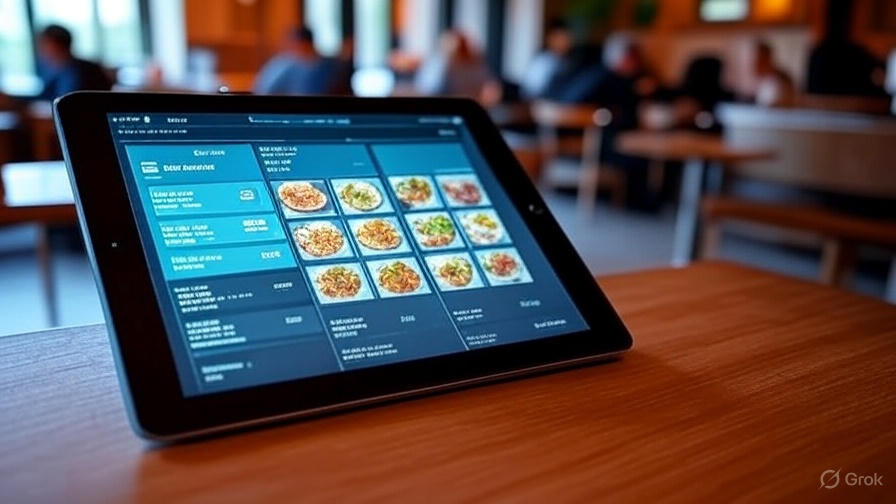A press conference in Bercy on June 26, 2025, with Véronique Louwagie, France’s Minister Delegate for Commerce, Crafts, Small and Medium Enterprises, and the Social and Solidarity Economy, announced a big plan to update the country’s meal voucher system.
These vouchers, called titres-restaurant, have been a common workplace benefit since 1967, but they are now going to be completely changed to deal with problems and meet modern needs.
Here’s what’s different and why it matters for employees, businesses, and stores.
The Strength of Meal Vouchers
Meal vouchers, which are paid for by both employers and employees, are a popular benefit in France that helps millions of workers and thousands of businesses.
- They are responsible for about €10 billion in yearly spending at grocery stores, restaurants, and supermarkets.
- The National Meal Voucher Commission (CNTR) has approved 243,000 merchants to accept them.
- They help 5.5 million workers and have an average value of €9.40.
Key Metrics of Meal Vouchers
| Value of the Metric | Data |
|---|---|
| Average Value of a Voucher | €9.40 |
| Beneficiary Employees | 5.5 million |
| Approved Merchants | 243,000 |
| Total Annual Spending | €10 billion |
Recent Data Highlights
- Employees: Since 2019, 75% of people who use vouchers have changed how they eat lunch, choosing more varied or cheaper options (Viavoice, March 2024).
- Employers: 72% of workers say that meal vouchers affect their choice of employer (Viavoice, March 2024).
- Merchants: Vouchers bring in money at face value, helping local businesses.
Despite its popularity, the system has problems like outdated processes, lack of transparency, and not fitting with how people shop today.
After four months of talks with employers, employees, voucher issuers, and merchants, the government came up with a plan to fix these problems, structured into three main parts.
Pillar 1: Making the System Easier to Use and More Up-to-Date
The first set of changes aims to fix problems that have been around for a long time with practical, long-term solutions:
- Full Digitalisation: Meal vouchers will become completely digital, with paper versions being phased out for more convenience and efficiency.
- Expanded Use: Vouchers will always be able to be used for non-perishable food items, like groceries, to keep up with changing consumer habits.
- Year-End Discounts Are Not Allowed: Issuers will not be able to give merchants discounts at the end of the year (RFA) to make sure everyone is treated fairly.
- Transparency Charter: A new charter will require clear communication about the terms and costs of vouchers, protecting everyone involved.
Pillar 1 Summary Table
| Goal for Change | Description |
|---|---|
| Complete Digitalisation | Use digital vouchers instead of paper ones to make things easier |
| More Use | Make it possible to use vouchers for food that doesn’t go bad |
| No Discounts at the End of Year | Ensure merchants get a fair share of the money |
| Charter of Transparency | Promote clear and honest communication about voucher terms |
Pillar 2: Increasing Consumption and Unity
The second pillar wants to improve the voucher’s role in encouraging spending while also adding a social good aspect:
- Use on Sundays: Workers can now use vouchers on Sundays, giving them more freedom.
- One-Year Validity: Vouchers will only be good for a year, and they can’t be renewed. This encourages people to use them promptly.
- Redirecting Unused Vouchers: Expired or “frozen” vouchers will fund the “Mieux manger pour tous” food aid program, helping people in need.
- Protecting Charitable Donations: The ability to give vouchers to charities will be protected, strengthening the system’s social impact.
Pillar 2 Summary Table
| Reform’s Effects | Description |
|---|---|
| Use on Sunday | Employees can use vouchers more easily now |
| Valid for One Year | Encourages timely spending and reduces waste |
| Redirecting Unused Vouchers | Helps pay for food aid programs |
| Giving to Charity | Maintains the option to donate vouchers to charities |
Pillar 3: Making Governance and Access Easier
The third pillar updates how the system is run and accessed, especially for businesses:
- Simplified Merchant Registration: The CNTR’s paper-based approval process will be replaced with a fully digital registration system, making it faster and easier for businesses.
- Giving Voucher Issuers More Power: Issuers will be more responsible for ensuring that merchants follow the rules.
- New Oversight Body: A new group of economic interests, made up of all approved voucher issuers, will take over merchant monitoring from the CNTR, which will no longer exist.
Governance Change Table
| Old Way of Doing Things | New Way of Doing Things | Pros |
|---|---|---|
| Approval by CNTR on paper | Digital registration system | Faster, cheaper, less paperwork |
| CNTR oversight | Issuer-led compliance group | Less red tape, easier governance |
Why This Is Important
The meal voucher system is more than just a free lunch for workers; it’s:
- A useful tool for businesses.
- A way for employers to stand out.
- A revenue driver for stores.
But because of its old ways of doing things and lack of flexibility, people are calling for change.
These reforms aim to make the system more:
- Fair.
- Easier to use.
- Adapted to today’s needs.
They also add social responsibility by supporting food aid programs.
- Employees will find it easier to use digital vouchers and use them on Sundays.
- Merchants will benefit from simplified registration.
- Everyone will benefit from clearer rules and more collaboration, ensuring the system helps both individuals and society as a whole.
Thinking Ahead
The government’s ambitious plan, made with input from everyone involved, sets a new course for meal vouchers in France.
As these changes happen, both workers and businesses can expect a system that is:
- More modern.
- More fair.
- Still a valuable social benefit that keeps up with the times.

